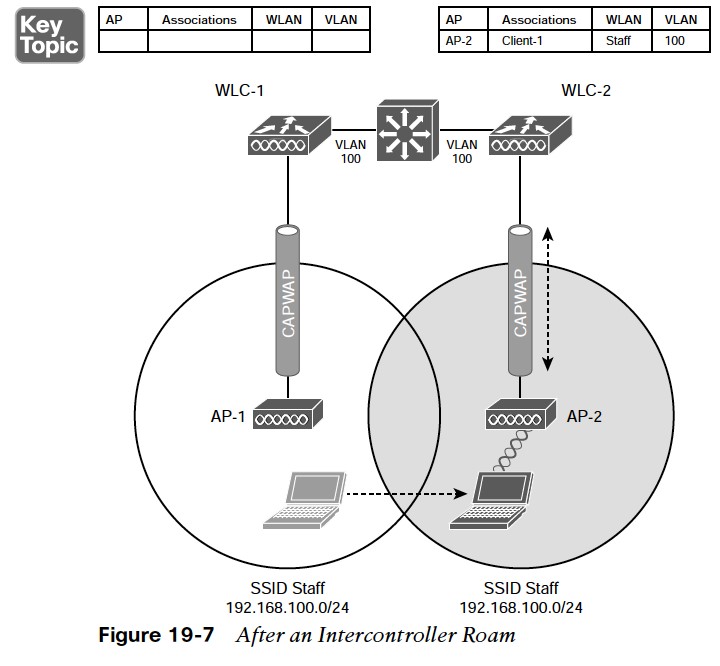
About Lesson
Roaming Between Centralized Controllers
the mechanisms that allow wireless devices to roam from one AP/controller pair onto another.
- When two or more controllers support the APs, the APs can be distributed across them.
- As always, when clients become mobile, they roam from one AP to another—except they could also be roaming from one controller to another, depending on how neighboring APs are assigned to the controllers.
Before an Intercontroller Roam
- APs lie on two different controllers, the client makes an intercontroller roam.
- WLC 1 has one association in its database—that of Client 1 on AP1.
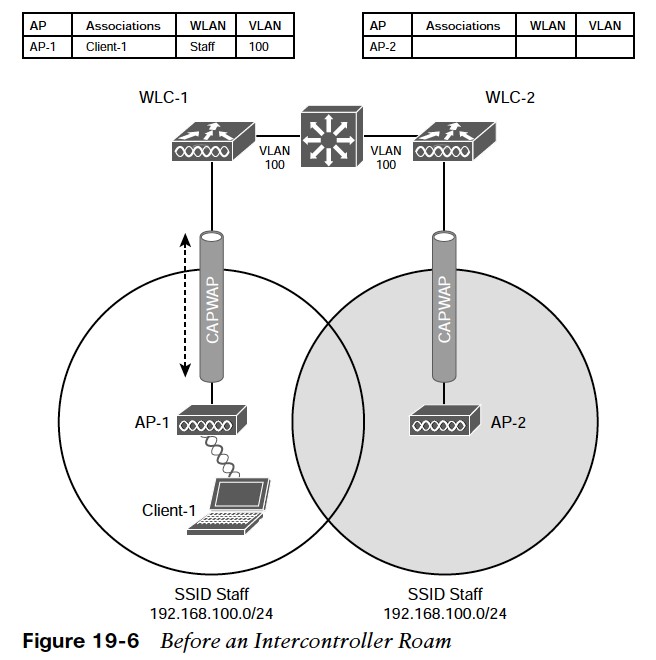
After an Intercontroller Roam
- When the client roams to a different AP, it try using its existing IP or renew an address.
- Client roaming to AP 2, WLAN Staff also bound to the same VLAN100 and 192.168.100.0/24.
- Because the client roamed between APs but stayed on the same VLAN and subnet, it made a L2 intercontroller roam.

Before a L3 Intercontroller Roam
- The two controllers involved compare the VLAN assigned to respective WLAN.
- If the two VLAN IDs differ, the controllers arrange a L3 roam, allow the client to keep using its IP.
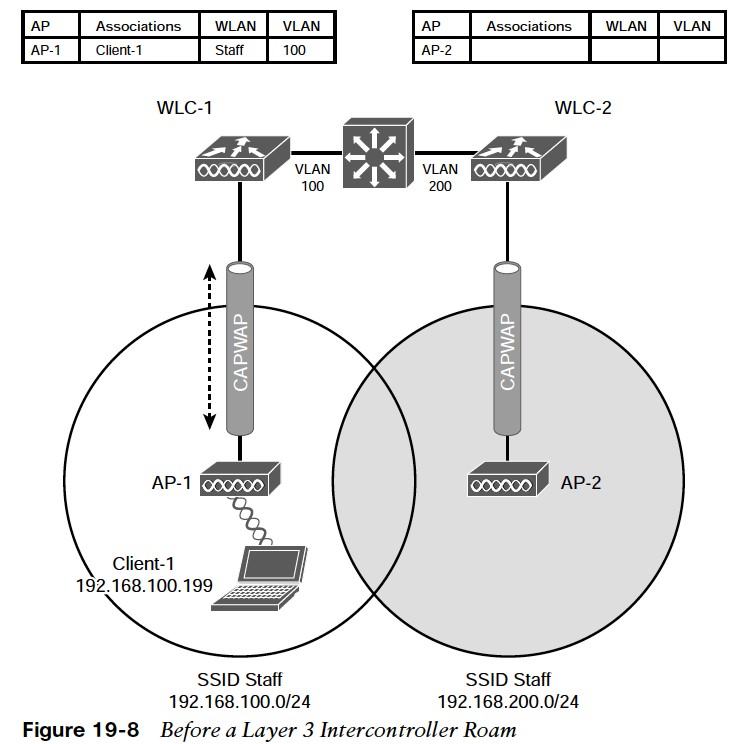
After a L3 Intercontroller Roam
- A L3 intercontroller roam consists of an extra tunnel between original and the foreign controller.
- The tunnel carries data to and from the client as if it is still associated with the original controller and IP subnet.
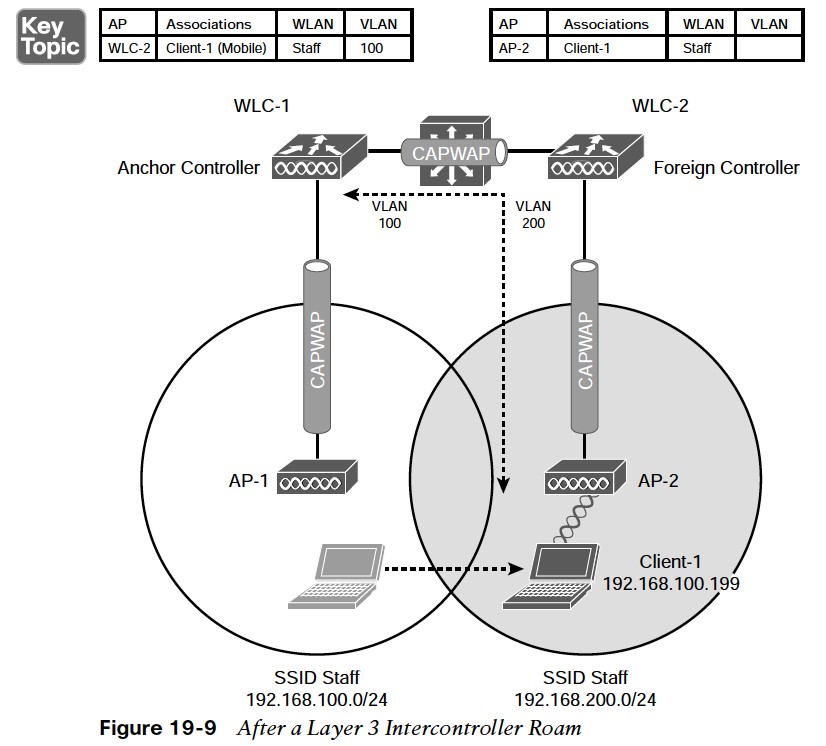
Scaling Mobility with Mobility Groups
- Controllers organized into mobility groups to facilitate intercontroller roaming.
- If two centralized controllers configured to belong to the same group, clients can roam quickly between them.
- If two controllers assigned to different mobility groups, clients can still roam between them, but the roam is not very efficient. Credentials are not cached and shared, so clients must go through a full authentication during the roam.
Mobility Group Hierarchy
- Each controller maintains a mobility list that contains its own MAC and the MAC of other controllers.
- Each controller in the list also assigned a mobility group name.
- it knows of and trusts only the other controllers the list.
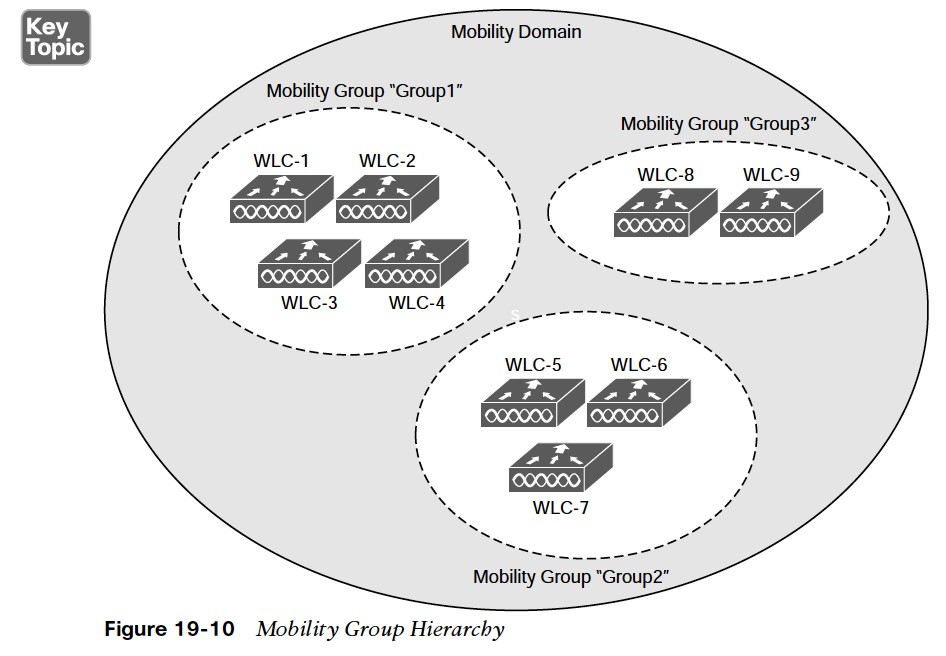
Other useful information:
Join the conversation